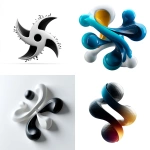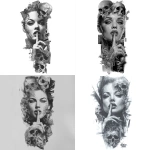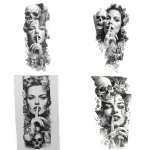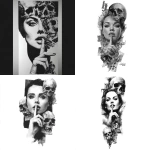Explore the Best AI Image Gallery

The Future of Product Photography: Embracing AI Innovations
In the world of product photography, the landscape is rapidly changing. The advent of artificial intelligence (AI) is redefining how products are showcased, paving the way for enhanced creativity, efficiency, and accessibility. This article explores the various aspects of AI's impact on product photography, its potential uses, ethical dilemmas, and future trends that are shaping the creative industry as we know it.
The Role of AI in Product Photography
AI technologies like machine learning and computer vision are making waves in product photography, allowing businesses and creators to produce stunning images quickly and efficiently. Here are some prominent roles AI plays in this area:
- Automating Image Editing: Traditional editing processes can be time-consuming and labor-intensive. AI-powered tools are increasingly capable of automating tasks such as background removal, color correction, and retouching, thereby saving time and ensuring consistency across images.
- Enhancing Image Quality: AI algorithms can analyze photographs and enhance their quality, improving aspects such as sharpness, brightness, and contrast. Filters and enhancements powered by AI can even adapt images to specific platforms or audience preferences.
- Generating Product Mockups: Through deep learning techniques, AI can create realistic product mockups and lifestyle images, allowing for endless iterations and options without the need for extensive photoshoots.
Potential Uses of AI-Driven Product Photography
AI applications in product photography extend beyond mere automation, offering creative opportunities and advanced functionalities that can benefit businesses and consumers:
- Personalization: AI can analyze customer data to create personalized product imagery that resonates with individual consumer preferences. This results in targeted ads and campaigns that can significantly boost conversion rates.
- Virtual Try-Ons: By utilizing augmented reality (AR) in tandem with AI, brands can offer virtual try-on experiences for clothing and accessories, making it easier for customers to visualize products before purchasing.
- Dynamic Content Creation: AI can generate dynamic and unique content that adapts to trends and user behavior, ensuring relevance and engagement across platforms.
Ethical Considerations and Challenges
While AI technology offers immense potential, it also raises ethical concerns that need to be addressed. Some key issues include:
- Image Manipulation: The fine line between enhancing an image and misleading consumers can be a gray area. Misrepresentation of products can lead to trust issues and resemble false advertising if not transparently handled.
- Intellectual Property: As AI generates images, questions arise about ownership and copyright. Who owns an AI-generated image? What rights do original creators have when their work is used to train AI models?
- Bias in Algorithms: AI systems can inherit biases from the data they are trained on, which may result in skewed representations of products and demographics, particularly in fashion and beauty photography.
Future Trends in AI-Driven Product Photography
The landscape of product photography is poised for significant transformation as AI continues to evolve. Here are some emerging trends to watch for:
- Integration of AI and AR: The merging of AI and AR will likely create more immersive shopping experiences that could reshape e-commerce and consumer engagement in novel ways.
- AI-Generated Video Content: The future of product storytelling may lie in AI-generated video assets that can capture attention through personalization and interactivity.
- Sustainability and Efficiency: As businesses seek to be more environmentally friendly, AI can minimize waste by reducing the number of physical products needed for effective marketing imagery by creating virtual representations instead.
Conclusion
The integration of AI in product photography heralds a new era where creativity meets technology in unprecedented ways. As the industry navigates the advantages and challenges presented by AI, it will be crucial for creators to leverage these innovations responsibly while considering ethical implications. Embracing these AI advancements not only enhances product visibility but also elevates the overall consumer experience in an increasingly digital world. As we look to the future, the collaboration between human creativity and artificial intelligence will undoubtedly continue to push the boundaries of what's possible in product photography.


](https://images.ai-img.art/thumbnails/150/37f115f2fa75765b87e6d3e2c9f1b0a80a6a46efa8b864a05278c7fc0a0a62e7.webp)



](https://images.ai-img.art/thumbnails/150/d29fcfc8037938184a641f7980e1102e24a6e82088bc465886d26ffe5bb006c7.webp)


](https://images.ai-img.art/thumbnails/150/336026613fd234b8d6908fe18ecc09b2b2ecf7b8dfe294742041c9862dc499c1.webp)




](https://images.ai-img.art/thumbnails/150/24610c8978ce6b4f1ced8639b434482871adb07e38af8b90cd535f2533bf18cc.webp)
](https://images.ai-img.art/thumbnails/150/85464d88f1d4314cd042a02a6f41440fc3b4343db529794cbe8e6836fdadf409.webp)



](https://images.ai-img.art/thumbnails/150/9127f72c6be19d533c26ac476f4d216cd89a6a2d7c351333489a3eff30c3ec5a.webp)






](https://images.ai-img.art/thumbnails/150/4a4f2a16da94ebadad64aeb3b0fb4e64d426431f1d651cc4929142c728fe85b7.webp)



















](https://images.ai-img.art/thumbnails/150/b90a5f332cb5d8f02116934e13abd20233e0eeb2368274dbdffaa2e281e4dff5.webp)


